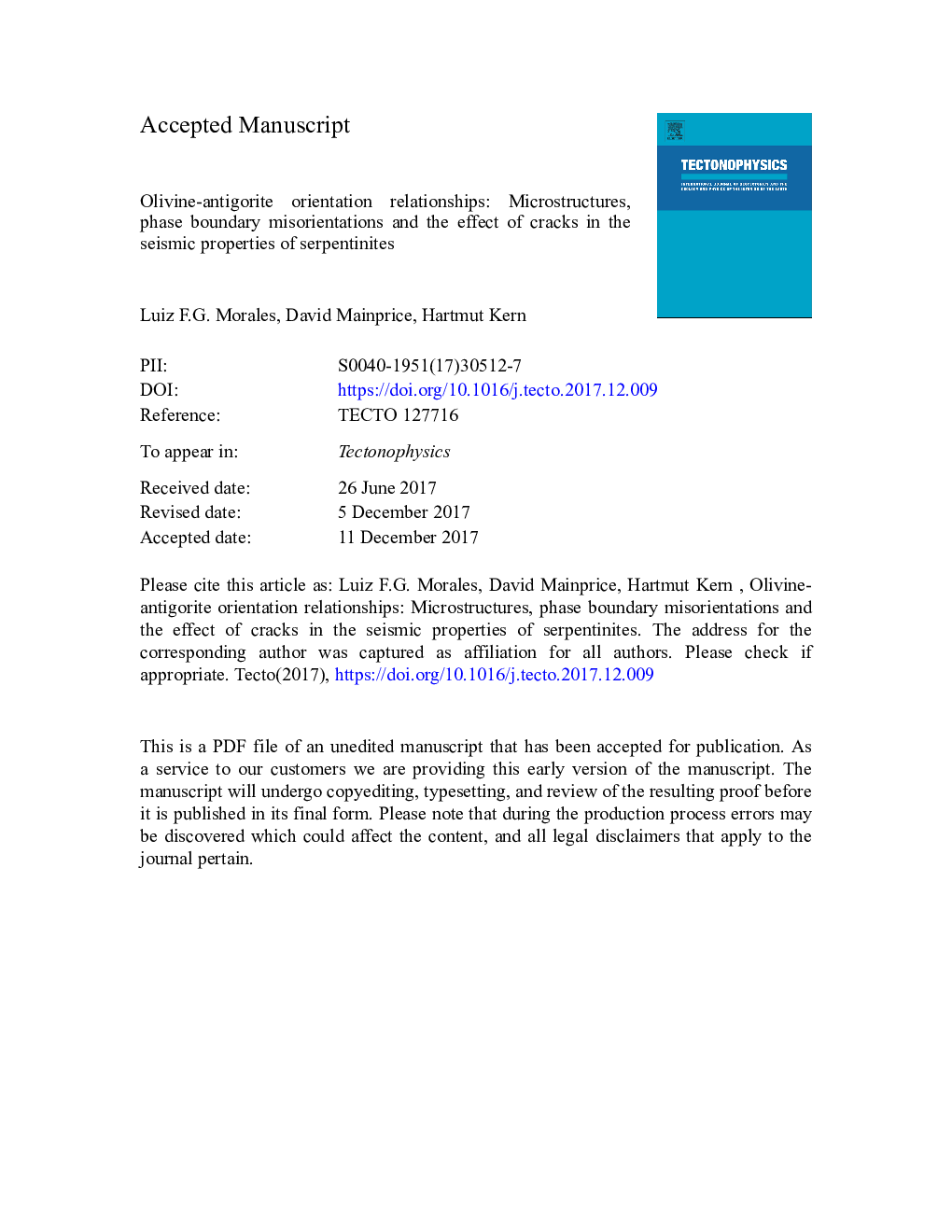| Article ID | Journal | Published Year | Pages | File Type |
|---|---|---|---|---|
| 8908766 | Tectonophysics | 2018 | 70 Pages |
Abstract
Antigorite-bearing rocks are thought to contribute significantly to the seismic properties in the mantle wedge of subduction zones. Here we present a detailed study of the microstructures and seismic properties in a sample of antigorite-olivine schist previously studied by Kern et al. (1997, 2015). We have measured crystallographic orientations and calculated the seismic properties in three orthogonal thin sections. Microstructures indicate that deformation is localized in the bands with high antigorite fractions, resulting in strong crystallographic preferred orientations (CPOs) with point maxima of poles to (100) parallel to lineation and poles to (001) to the foliation normal. Olivine CPO suggests deformation under high temperature and low stress, with a [100] fiber texture. The CPO strength varies with grain size, but is strong even in fine-grained antigorite, and larger grains tend to display higher internal misorientation. Orientation relationships between olivine and antigorite are evident in phase boundary misorientation analysis, (100)ol||(001)atg being more frequent than [001]ol||[010]atg. Two new orientation relationships between olivine and antigorite have been documented. Seismic velocities decrease while anisotropy increases with increasing antigorite modal content. Antigorite grain shape has a weak effect on seismic velocities, but it is important on anisotropy. Comparison between CPO-derived seismic velocities using Voigt, Reuss, Hill averages and geometric mean only showed good agreement in 1/3 of experimental velocities. If the crack porosity of 1.63% measured experimentally at 600â¯MPa was used in the self-consistent model with two crack orientations with planes normal to Z and Y, good match with all experimental velocities was achieved. The self-consistent model implies important crack porosity in the foliation plane at 600â¯MPa that reduces Vp normal to the foliation by 0.3â¯km/s.
Keywords
Related Topics
Physical Sciences and Engineering
Earth and Planetary Sciences
Earth-Surface Processes
Authors
Luiz F.G. Morales, David Mainprice, Hartmut Kern,
